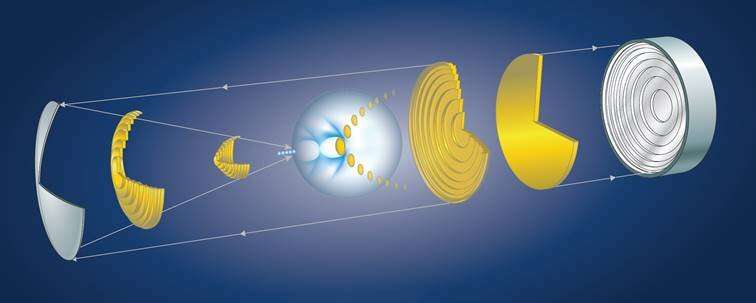Best of Last Week – Smaller particle accelerators, COVID-19 vaccine shows promise and a warning to stay 8 meters apart

It was a good week for physics research as a team at the University of Rochester's Laboratory for Laser Energetics unveiled a new laser technique that will allow more powerful—and smaller—particle accelerators. Such machines would bring the power of current accelerators to much smaller labs. Also, a team of engineers at California Institute of Technology showed that tiny optical cavities could make quantum networks possible by providing a foundation for their development.
In technology news, a team at Google announced that they had designed an algorithm that learns how to achieve optimum circuitry placement, which could lead to chips that design themselves and likely even smaller chips. Also, startup Ubiquitous Energy Inc. announced that it has developed a glass window packed with transparent photovoltaic cells that it believes will revolutionize the way solar energy is harnessed. And a team at Pennsylvania State University announced that they had developed a way to harvest wasted magnetic field energy in the home and convert it into electricity—possibly enough to power small devices. Also, a team of researchers in China unveiled a design strategy for producing stable and high-energy aqueous zinc-manganese dioxide batteries.
In other news, a team at the University of Copenhagen announced that they had retrieved genetic information from an 800,000-year-old human fossil, and in so doing, helped to resolve a dispute over human ancestry. And a team at the University of Pittsburgh School of Medicine announced that a COVID-19 vaccine candidate showed promise in its first peer-reviewed research study. Also, a team at the University of Illinois at Urbana-Champaign found that physical force alone can spur gene expression—no intermediates, enzymes or signaling in the cytoplasm are needed.
And finally, if you have been heeding the warning to keep at least two meters away from other people in public to protect against COVID-19, you may want to take a look at the results of a research effort by a team at MIT—they found that to be truly safe, you need to extend that distance to eight meters.
© 2020 Science X Network